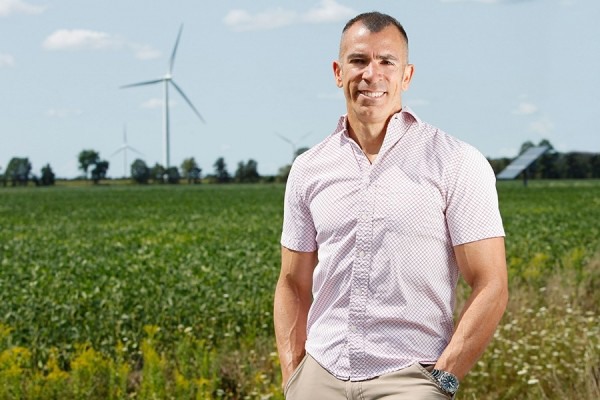The University of Windsor is partnering with the Ontario Greenhouse Vegetable Growers (OGVG) and Kruger Energy to investigate using existing wind farms to power and heat greenhouses in Southwestern Ontario.
Dubbed the HIGH Energy project, short for the Hydrogen Integrated Greenhouse Horticultural Energy project, the new joint venture proposes using wind turbines to generate clean electricity and hydrogen to use in the area’s multi-billion-dollar greenhouse sector.
“Farmers are looking to expand operations and increase their access to low carbon energy solutions,” said Aaron Coristine, OGVG’s manager of science, regulatory affairs, and government relations. “This joint venture will construct pathways to achieve this with novel adaptations of clean, proven energy technologies.”

Southwestern Ontario boasts the highest concentration of greenhouses in North America. The greenhouse sector has been rapidly growing, but further expansion is thwarted by a lack of locally available energy. Wind farms already standing in the area could provide a solution, delivering electricity and hydrogen directly to greenhouses.
Kruger Energy currently generates 200 megawatts of wind energy in Southwestern Ontario, which is enough to potentially power approximately 60,000 homes.
“We’re pleased with the prospect of an additional market for our product,” said JJ Davis, Kruger Energy’s general manager of Canadian operations.
“Kruger is a leader in sustainability and strategic asset management, which will enable us to reliably supply clean energy to the vegetable greenhouse sector with our long-established wind farms.”
The project proposes building a commercial facility that takes locally captured wind energy, turning it into electricity and hydrogen for greenhouses that grow tomatoes, peppers, cucumbers, strawberries, and other crops. The first step of the project is to do the economic and regulatory modeling to make the business case for the venture.
“There will be a number of firsts in this project,” said Rupp Carriveau, an engineering professor and director of the Environmental Energy Institute at the University of Windsor, who is leading the modeling efforts.
“We anticipate a lot of learning in both the engineering and policy spaces,” he said. “The HIGH Energy project excites us. Using proven existing assets in a new way to improve things or solve a problem sounds practical and resourceful. We love solutions like that.”
This project aligns with the direction of senior levels of government in meeting the energy and food needs of communities across the province and country.
For more information: 
Ontario Fruit and Vegetable Grower's Association
www.ofvga.org
